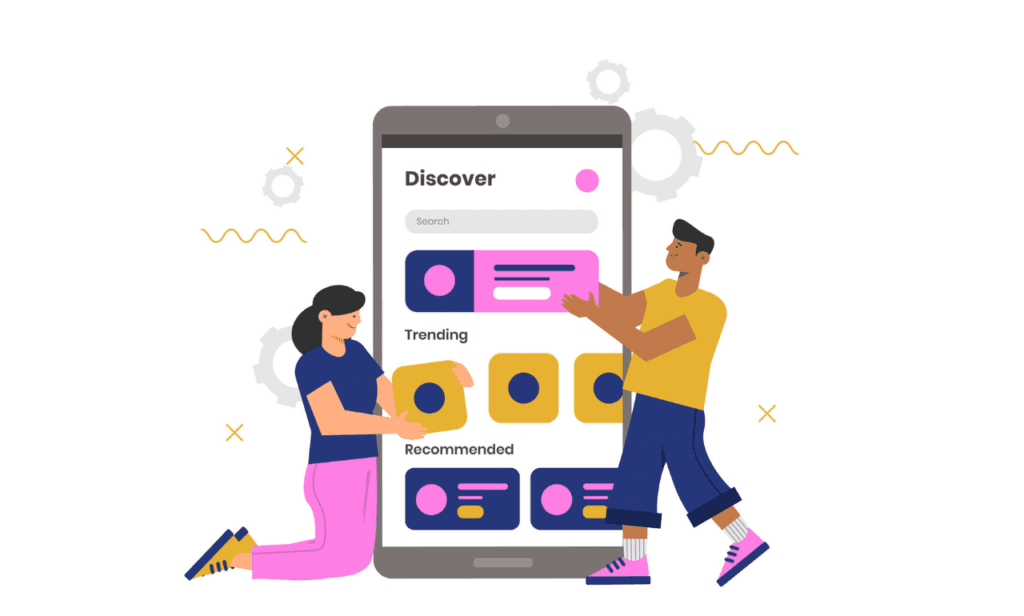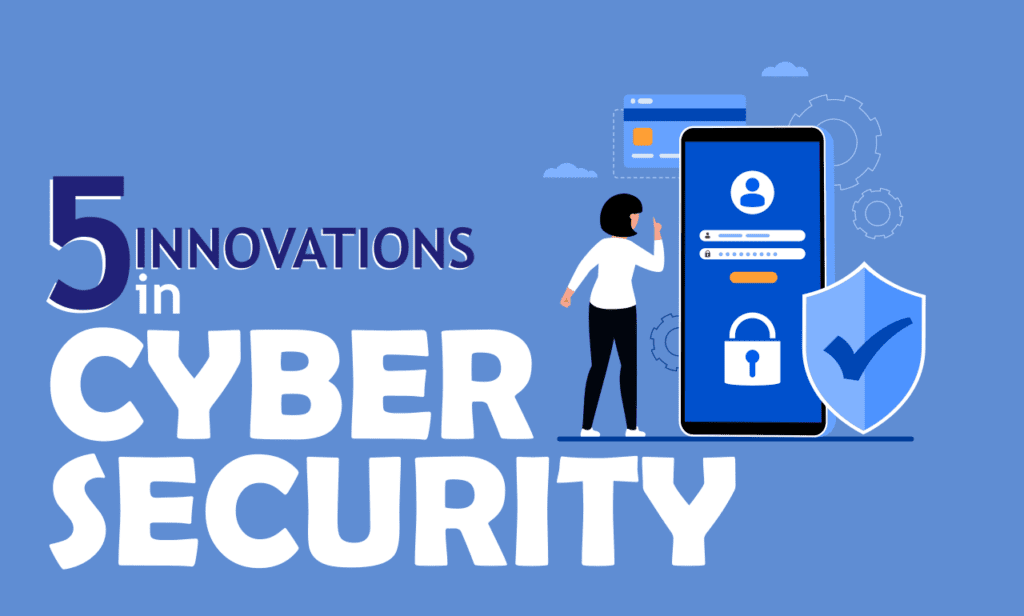Introduction The trading industry is rapidly evolving, and technology is at the core of that transformation. Off-the-shelf solutions often fail to meet the dynamic needs of brokers, traders, and compliance teams. That’s why forward-thinking firms are turning to custom trade app development and specialized broker management software to stay competitive, compliant, and customer-focused. Why Trading Firms Need Custom Software 1. Tailored Experience for Traders and Brokers Custom-built trading apps allow firms to design platforms that align precisely with their brand identity and user workflows. Whether you’re targeting retail investors or institutional clients, a personalized user experience builds trust and enhances retention. 2. Broker Operations Simplified Modern broker management systems streamline onboarding, client KYC, commission structures, and real-time reporting. You can automate operations that are otherwise time-consuming and error-prone, freeing up teams to focus on high-value activities. 3. Built-in Compliance & Security With region-specific trading rules (like SEBI in India or FINRA in the U.S.), it’s essential to embed compliance features within the system. Custom trading platforms can include automated alerts, audit trails, and role-based access controls to ensure regulatory alignment. 4. Full Scalability & API Integrations As your brokerage grows, your software must scale with you. Custom apps can integrate easily with external data feeds (like NSE, NYSE), payment gateways, CRMs, and accounting systems—something most generic platforms struggle to deliver. Core Features of a Stock Market Trading App When developing a stock market trading app, the following features are often essential: Check out this trading app we built for one of our clients here. These components form the backbone of an engaging, secure, and high-performing trading platform. Key Modules in Broker Management Software Brokerage houses and advisory firms require much more than a front-end app. A powerful broker management system should include: Whether you’re building for internal ops or client-facing services, automation and clarity are key. Stand Out in a Crowded Market with a Unique Trading Experience In a space dominated by similar-looking platforms, custom trade app development enables your brand to truly stand out. You’re not just replicating features—you’re shaping experiences that reflect your firm’s philosophy, product vision, and service style. Whether it’s through exclusive tools like theme-based investments, multilingual support, ultra-fast order execution, or a unique onboarding flow for different investor segments, custom development empowers you to showcase your USP clearly. Instead of being just another trading app, your platform becomes a strategic differentiator, helping you build brand loyalty, reduce churn, and command premium trust among users. Choosing the Right Partner for Trade Software Development Custom trade software development is a specialized domain. Look for a tech partner with: Use Cases: Who Needs Custom Trading Solutions? Conclusion: Build for Scale, Build for Trust Whether you’re looking to upgrade your existing systems or launch a brand-new stock market trading app, the key lies in flexibility, security, and performance. Off-the-shelf tools may offer a fast start, but only custom trade app development can give you a sustainable edge in a highly competitive market. Want to Build Your Own Trading App or Broker Platform? We help brokerages, financial startups, and fintech innovators bring their ideas to life. From custom trade software development to complete broker management platforms, we deliver scalable, secure, and regulatory-ready solutions.
How to build MVP for Pre Seed Funding
MVP or Minimum viable product can be any product with just enough features to be usable by early customers who can then provide feedback for future product development. While MVP can be across all industries and domains, in this blog we will focus on MVPs for Apps and how to build one for Pre Seed Funding. Don’t worry if you aren’t aware of these terms, this blog will make sure you take away a lot more than you came with! What exactly is MVP Application in the IT industry? A Minimum Viable Product (MVP) app is a basic version of a software application that includes only the core features and is used to test the viability of an idea. This is like the baby version of your dream app, with some of the important features, ready to be tested for the real world. Why should you invest in a Minimum Viable Product? It validates your product idea MVPs help validate if there’s a market for the app and if people want it. It helps gathering the most important proof- User Feedback MVPs help developers learn from early adopters and get insights on how to improve the app. Gives you a reality check MVPs help entrepreneurs avoid wasting time and money on features that no one wants. Lays foundation for full-scale development MVPs can be the foundation for developing a more polished and feature-rich app. Check out our Fintech Apps with great Ui Ux and features to understand more about Market Demand around Fintech. What is MVP in Agile Development? Agile development is a method of development where we focus on delivering a product in small, functional increments. This works really well when it comes to software development which helps to focus on collaboration, iteration and adaptability. Here MVP is an early version of a product that has the minimum features needed to test the product’s concept and gather user feedback. A reminder There have been long debates on whether MVPs are necessary and prerequisite for Pre Seed Funding. The answer is no. Does having a MVP help your pitch for pre-seed funding? Yes, when the MVP is done well and enhances the overall pitch. But it’s not essential, and a large (and growing) number of startups are able to use the pre-seed funding they attract to build the MVP. It totally depends on your startup’s needs and funding situation. How to build an MVP App and raise Funding in 2024 Here comes the important part of the blog. Suppose you have a great idea for your Fintech App, and have researched the market need of your imagined product, which is going to rise in numbers as you grow. But while seeking Pre Seed funding, you come to know that since your idea is already for an app, having an MVP can lead to building a better pitch and build trust to your investors. You can refer to our blog Flutter or React Native for Fintech App Development to understand and choose better for your Fintech App Development. Talking numbers first, on an average, building MVP for Fintech App Idea may range between $50,000- $100,000 depending on various factors like the core idea, features, legalities and other important factors. Here’s a quick breakdown of the cost of building an MVP for your Startup’s pre seed funding. Features: Payment processing, user accounts, data security. Estimated Budget: $50,000 – $100,000 Development: $30,000 – $70,000 Design: $10,000 Compliance/Legal: $5,000 – $15,000 Testing: $5,000 We can help you build an MVP for your Fintech startup at a competitive market price and limited time. Our team of experienced developers and Ux/Ui designers are always up for innovative and exciting projects. We would be happy to become a part of your Fintech Dream! Book a meeting now and let’s figure out your way to funding with a perfect to pitch MVP. Things to keep in mind while building an MVP 1. Market Research 2. Target Market Analysis and building User Persona 3. Key features- How is your app different from the sea of apps already present 4. Finally, build MVP by partnering with experienced and expert app developers who understand the nuances of Fintech. If you are starting your “Finding Investors” quest, we have got an exclusive list of Micro VCs and Pre Seed Investors, with their Emails, LinkedIn Profiles and Contact Info, just for you! Download the FREE SpreadSheet Now from the link below!
Why Neobanks are the Future and How to Build One
Talking about Fintech and not including Neo Banks? Can’t miss this one! Let’s jump straight into it. What exactly are Neo Banks? And what’s the craze about them in the Fintech Industry? Neo Bank is the term used to describe a completely digital bank, that exists and offers services without any physical branches. Neo banks are also called Challenger Banks, the reason for this name will be discussed later in the blog. What’s making neobanks a popular term, especially amongst the GenZs? It’s the reason they were built on. Neo banks are a response to the changing needs of customers in the digital age. They are often cheaper than traditional banks and may offer more competitive interest rates. Let’s understand this with some statistics around Neo Banks. In just three years, the global customer base of neobanks has grown from 2 million to 15 million, and the number of neobanks has increased from around 70 to over 250. According to stats, the global neobank market is growing at a CAGR rate of over 47% and is expected to hit $722,60 billion by 2028.(SDK.finance) What’s so attractive about Neobanks? With the world shifting towards “digital-everything”, the emergence of Neobanks seemed the next step in the future of innovative and digitally equipped financial banking. Replacing the inherent need of having a physical bank to reach out to, NeoBanks are the one stop destination for all the banking needs, be it around savings accounts, current accounts, debit and credit cards, digital money transfers, payment solutions, or lending. By leveraging technologies like artificial intelligence (AI), automation, and cloud computing -something that traditional banks lack, Neobanks are attracting a large part of the ‘modern’ customers who want their needs to be fulfilled ‘at one click’. This is the reason why they are often called ‘Challenger Banks’. As their name says, these digital banks ‘challenge’ the traditional banking system by targeting both personal and business consumers who are often overlooked by high-street banks. We will go deeper into the making of Neobanks later in the blog. Do Neo Banks need collaborations with physical banks? This question often comes up when talking about Neobanks in India. Since Neobanks are not considered fully fledged banks and do not have banking licenses, they are not directly regulated by the RBI (Reserve Bank of India). The RBI prohibits them from acquiring a banking license. Instead, Neo Banks rely on partners who offer financial services like instant payments, lending, or money transfers. Who are the partners here? Neobanks partner with licensed banks that are governed by the RBI. Some of these banks include : State Bank of India (SBI) ICICI Bank Axis Bank Induslnd Bank Kotak Mahindra Bank IDFC First Bank Yes Bank HDFC Bank RBL Bank Federal Bank How Do Neobanks Earn? This is the most interesting part of the blog if you are someone aspiring to build a neobank of your own or someone already in the Fintech industry, trying to grasp some interesting business models. We can help you build your own Fintech with custom features and robust security. Our team of Fintech experts and enthusiasts is excited to meet you! Getting back to the topic, let’s unbox this business model! How are Neobanks built While there are two types of NeoBanks, Full Stack Neobank (independent bank with a banking license )and Front End Neobanks (the one we discussed above, which partner with traditional banks to operate), in this blog we will be discussing the Business Model of Front End Neobanks, since those are the ones popular and allowed in India. Taking help from Niyo– India’s first fintech to pursue Neo Banking, we can understand the model underneath the working of Front End Neobanks. Let’s revise the cases where Front End Neobanks work best While being supported by the traditional banks from below, Neobanks foster strategic partnerships and a way for businesses to perform businesses without any hindrance, going fully digital. Centred around customers, Neobanks have a innovative USP while working under the regulations put by the regulatory bodies, providing a seamless experience, legally. To understand the regulations for building Fintech, read our dedicated blog here. India’s leading Neobanks There are several neo-banks available in India. Given below are the examples of some of the most popular of them in the country Summing up Building a Neobank in India is possible, given you follow all the rules and regulations by the regulating bodies. It is the next trend in Digital Finance, and a great opportunity to tap into, given the huge customer base in India(Gen Z Population loves digital experiences). If you want to build your own Neobank, we can help you.
Regulatory Compliance Checklist for Fintech Apps
India’s trajectory of growth in the fintech market is nothing short of impressive. With a CAGR of over 20%, the sector is on a rapid ascent, propelled by high adoption rates and innovative service offerings. In fact, India boasts as the second-largest and fastest-growing fintech ecosystem around the globe, with an adoption rate of 87%, reflecting the nation’s enthusiastic embrace of financial technology. In the ever-evolving world of fintech, regulatory compliance is crucial for maintaining credibility, trust, and a seamless operation. Many startups and entrepreneurs in the Fintech space often find themselves navigating through various sources to understand the legalities and regulations required to stay compliant with the country’s laws. This blog serves as a comprehensive guide to help your Fintech app align with the Indian legal framework and regulatory standards. Let’s start with the most Important Regulatory Body of India, RBI. RBI Guidelines Fintech companies in India are governed by the Reserve Bank of India (RBI). Ensure your Fintech App complies with: Payment and Settlement Systems Act, 2007 Required for any payment services, including mobile wallets or UPI-based apps. NBFC Licensing Requirements If your fintech app deals with lending or digital credit, make sure you’re following the Non-Banking Financial Company (NBFC) rules. Prepaid Payment Instruments (PPI) Comply with guidelines if your app offers prepaid payment instruments, like wallets or vouchers. KYC (Know Your Customer) Compliance A thorough KYC process is mandatory for onboarding users, verifying identities, and preventing fraud. Data Privacy and Protection Laws Information Technology (Reasonable Security Practices and Procedures and Sensitive Personal Data or Information) Rules, 2011 Ensure you have a robust framework for data protection, especially for handling sensitive customer data. Digital Personal Data Protection Act The India Digital Personal Data Protection Act 2023 (DPDPA) is a landmark legislation that aims to safeguard the privacy of individuals in the digital age. The Act came into effect on September 1, 2023, and it applies to all organizations that process personal data of individuals in India. Prevention of Money Laundering (PML) Act, 2002 Your app must include Anti-Money Laundering (AML) measures to comply with this act. Ensuring proper KYC verification and monitoring suspicious transactions will help you avoid legal issues and protect your users. Cybersecurity Guidelines CERT-In Guidelines All fintech apps must report cyber incidents to the Indian Computer Emergency Response Team (CERT-In). Implement strong security measures like two-factor authentication, encryption, and frequent vulnerability testing to protect user data. Digital Payment Security The RBI’s guidelines on digital payments require fintech apps to offer secure payment methods, protect user information, and ensure transparent transaction processing. Compliance with GST (Goods and Services Tax) If your fintech app involves the sale of digital services or goods, ensure you’re meeting India’s GST requirements by properly registering and charging taxes when applicable. P2P Lending Compliance (If Applicable) Peer-to-peer lending platforms are regulated by the RBI. If your fintech app facilitates lending, ensure compliance with the NBFC-P2P guidelines, which govern the conduct of P2P lending businesses. Intellectual Property (IP) Protection Ensure that your fintech app complies with Indian intellectual property laws, including software patents, trademarks, and copyright protections, to avoid legal disputes over proprietary technologies or branding. Foreign Exchange Management Act (FEMA) If your fintech app involves cross-border payments or deals with foreign exchange, ensure compliance with FEMA regulations for safe and legal financial transactions. Consent and Disclosure Policies Your fintech app must include clear consent policies, especially for data collection, third-party sharing, and marketing communications. Transparent disclosure of terms and conditions is critical to building trust with your users and complying with legal requirements. NOTE: The information provided in this Blog is for general informational purposes only and does not constitute legal or financial advice. You can find more comprehensive details on each of these from these Government Portals: PRAVAAH portal RBI Retail Direct portal IRDAI National Single Window System (NSWS) IFSCA FinTech Regulatory Sandbox
10 Reasons Your Fintech App Isn’t Gaining Sales: A UI/UX Expert’s Perspective
In today’s fast-evolving fintech landscape, a well-designed app is crucial for success. But even if your app offers revolutionary features, it might struggle to gain traction and convert users into paying customers. Why? The answer often lies in User Interface (UI) and User Experience (UX) design. Here’s why your fintech app might be missing the mark from a UI/UX expert’s viewpoint: Complex Onboarding Process First impressions matter. If your app requires users to fill out lengthy forms, verify numerous details, or jump through hoops just to get started, they’re likely to leave before they even experience its value. Solution: Simplify the onboarding process. Use progressive sign-ups, social logins, or guest access options to reduce friction and allow users to engage with the app more quickly. Poor Navigation A fintech app often has various functions like account management, investments, payments, and market tracking. If the navigation is unintuitive, users will get frustrated searching for basic features. Solution: Organise content logically. Use intuitive symbols, simple language, and a consistent layout. Make use of UX patterns like bottom navigation bars and search functionality to help users locate features effortlessly. Lack of Personalisation Modern fintech users expect apps to provide a personalised experience. An app that doesn’t adapt to user preferences—whether that’s by suggesting relevant financial tools or tailoring content to individual needs—will fail to engage users. Solution: Leverage data to offer customised dashboards, personalised notifications, and relevant content suggestions. Let users adjust settings and save preferences for a more tailored experience. Slow Load Times Financial transactions require real-time data. If your app is sluggish, users will quickly lose patience, especially when they are trying to make fast investment decisions. Solution: Optimize app performance by using faster algorithms, caching frequently used data, and minimising large file sizes. A delay of even a few seconds can cost you users and, consequently, sales. We know how crucial speed and security are for fintech apps, but we also recognize the importance of a seamless UI/UX. Feel free to explore some of our fintech apps, which combine great design with powerful features and top-notch performance. Check out our Fintech Apps Now! Cluttered Interface Fintech apps, by nature, handle complex data and transactions. But packing too much information onto the screen creates confusion. If users are overwhelmed by a cluttered interface with too many charts, numbers, or buttons, they’re likely to abandon your app quickly. Solution: Implement a clean, minimalist design. Prioritise essential features and keep secondary options tucked away in collapsible menus. Use white space to improve readability. Unclear CTAs (Calls to Action) If your app doesn’t clearly communicate its next steps, users won’t know how to interact with it. Whether it’s subscribing to a premium service or completing a financial transaction, if the CTA isn’t clear, users will feel lost. Solution: Use prominent, actionable CTAs that guide the user naturally. Buttons should stand out through size, colour, or placement. Ensure that they clearly indicate the intended action, such as “Invest Now” or “Upgrade Your Plan.” Insufficient Security Cues In fintech, trust is paramount. If your app doesn’t communicate security measures effectively, users will hesitate to proceed with transactions or even sign up. Ignoring Mobile-First Design Mobile is often the primary platform for fintech apps, yet some developers still treat mobile design as an afterthought. If your app feels clunky or poorly optimised for smaller screens, it’s going to cost you users. Solution: Ensure your app is responsive and mobile-first. Prioritise touch-friendly buttons, gestures, and simplified layouts to make navigating the app on a mobile device intuitive and seamless. Inconsistent Design Language Consistency in design is key to a seamless experience. If your app uses different fonts, colors, or layouts from screen to screen, it creates disorientation and looks unprofessional. Solution: Stick to a unified design language. Use consistent font sizes, colors, icons, and layouts throughout the app. This will enhance the flow and improve user confidence in navigating the app. Failure to Guide Users Some fintech apps expect users to understand all the functionalities without providing sufficient guidance. This lack of onboarding tutorials or in-app assistance can alienate users who are unfamiliar with certain features. Solution: Integrate micro-interactions, tooltips, and guided tours. Help users navigate the app with ease and offer explanations when necessary. Regular updates with “what’s new” or tutorial sections can also assist in driving engagement. Conclusion: Your fintech app’s UI/UX can make or break its success. From the first screen to the final conversion, every step should be smooth, intuitive, and enjoyable for the user. By addressing the pain points above, you can increase user retention, enhance satisfaction, and ultimately drive more sales. If your fintech app is struggling with user engagement or conversion, we at Profitmatics can help optimise your app’s UI/UX for better results. Let’s chat and turn your app into a user-friendly, revenue-generating machine! Book a Meeting Now !
11 Best Backtesting Apps/Tools for Indian Traders in 2024
If you are new to Trading, this blog is going to make things a lot easier for you. Keep reading to unlock some great Backtesting Tools!
5 Innovations in Cybersecurity for Fintech Apps: Securing the Future of Finance
In the high-stakes world of fintech, where financial transactions and sensitive data flow through digital channels, the importance of robust cybersecurity measures cannot be overstated. With cyber threats evolving at a rapid pace, staying ahead in cybersecurity is not just about keeping up—it’s about leading the charge. At Profitmatics, we deliver sophisticated fintech app solutions with exceptional security, leveraging our in-depth knowledge of industry standards. Here how our Experts put up with the latest innovations in cybersecurity for fintech apps and how our expertise can help you protect your digital assets. The Cybersecurity Landscape: Current Challenges Fintech applications face numerous cybersecurity challenges, and the stakes are high. Here are some eye-opening statistics that underscore the gravity of the situation: Data Breaches: According to a report by IBM, the average cost of a data breach in 2024 was $4.45 million, with financial services being one of the most targeted sectors (IBM Security, 2023). Beyond financial losses, a data breach can severely damage a company’s reputation. Customers trust fintech companies with their sensitive financial data, and a breach can erode that trust, potentially leading to loss of business and decreased customer loyalty. Fraudulent Transactions: Implementing multi-factor authentication (MFA), using AI-driven fraud detection systems, and continuously monitoring transaction patterns can help in identifying and preventing fraudulent activities. Integration Vulnerabilities: Integration vulnerabilities occur when fintech apps incorporate third-party services or APIs, which may introduce security risks if not properly managed. These integrations can expose the application to additional attackers. Increased Attack Surface: Each third-party integration or API adds a potential point of failure. If these integrations are not secured properly, they can be exploited by attackers. A study by the Ponemon Institute revealed that 60% of organisations experienced a data breach due to third-party integrations in 2022 (Ponemon Institute, 2023). Data Leakage: Poorly managed integrations can lead to unauthorised access or leakage of sensitive data, especially if the third-party services are not compliant with security standards. Top Players Securing the Future of Fintech The fintech industry is renowned for its rigorous security measures. To fully appreciate its depth, it’s essential to highlight the top players recognised for their excellence in fintech cybersecurity. CrowdStrike: Renowned for advanced endpoint protection and threat intelligence. Bluefin Payment Systems: Specialises in secure payment processing and encryption. Darktrace: Utilizes AI to detect and respond to cyber threats in real-time. IBM Security: Offers comprehensive security solutions, including threat management and data protection. Riskified: Focuses on fraud prevention and transaction security. Gen Digital: Delivers robust cybersecurity measures to protect digital assets. McAfee: Provides extensive threat detection and prevention solutions. Onfido: Known for identity verification and fraud prevention technologies. Trend Micro: Offers a wide range of security solutions for detecting and mitigating threats. Source: Eden Data Innovative Cybersecurity Strategies for Fintech Apps 1. Advanced Encryption Techniques Data security relies on Encryptions. The advancements in encryption methods are setting new standards for fintech apps. Techniques such as AES-256 (Advanced Encryption Standard) and RSA (Rivest-Shamir-Adleman) encryption ensure that data remains secure both at rest and in transit. Both of these techniques have certain differences, which are explained below. 2. AI-Driven Threat Detection Artificial Intelligence (AI) is revolutionizing cybersecurity with its ability to analyze large volumes of data and detect anomalies in real-time. Machine learning algorithms can identify unusual patterns and potential threats faster than traditional methods. 3. Multi-Factor Authentication (MFA) Multi-Factor Authentication (MFA) adds an extra layer of security by requiring users to provide multiple forms of verification. A study by Microsoft showed that MFA blocks 99.9% of automated attacks, making it a critical component in enhancing security (Microsoft, 2023). 4. Behavioural Analytics Behavioural analytics involves monitoring user behaviour to identify suspicious activities. By analysing patterns such as transaction frequency and login locations, we can spot deviations that may indicate fraudulent activity. 5. Secure APIs and Third-Party Integrations APIs are essential for modern fintech apps, but they can also be a security weak link if not properly managed. Using OAuth 2.0 and API gateways ensures secure data exchanges. A report by the API Security Project found that securing APIs with OAuth 2.0 can greatly reduce the risk of API-related breaches. Read one such case study on the making of a Trading App and how we managed API Integration on a challenging project with great success. Why Choose Us for Your Fintech App ? We understand how crucial Security is for Fintech App Development. At Profitmatics, we don’t just follow cybersecurity trends; we set them. Our team of experts is dedicated to implementing cutting-edge solutions that address your unique challenges. Here’s why we’re the best choice for your fintech app development needs: Expertise : Our developers have extensive experience in building and securing fintech applications. Customised Solutions: With our expertise in Fintech, we understand the vision of our clients better, and tailor our cybersecurity strategies to meet the specific needs of the app while complying with industry regulations. Proactive Approach: We stay ahead of emerging threats and continuously update our security practices to keep the app secure. Success Stories: Our apps have been pivotal in accelerating business growth along with robust security. Through tackling challenging projects and integrating new features, we’ve helped clients achieve 2X to 3X increases in revenue. These enhancements have empowered our clients to significantly expand their market presence and drive their own paths to success. Ready to Secure Your Fintech Future? If you’re looking to fortify your fintech app with the latest cybersecurity innovations, look no further. Our team is here to ensure that your app remains secure, compliant, and ahead of the curve. Connect with us today to learn more about our fintech cybersecurity solutions and how we can help you safeguard your digital assets. Let’s work together to make your fintech app not just functional but fortified against any threat.






